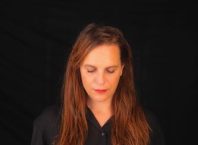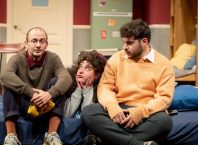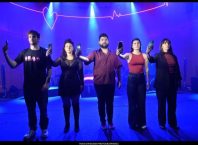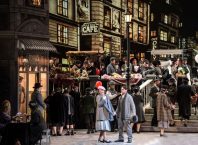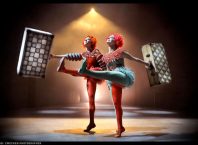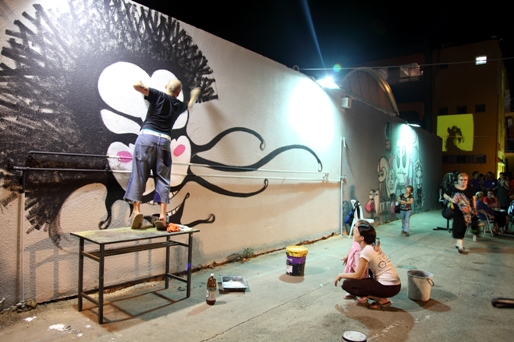
“We are not visitors, we live in this city,” said Mali Baruch, the artistic director of Art Factory, an experimental urban art project officially launched in Bat Yam last Thursday, August 12, 2010. A cohort of artists from different disciplines will be in residence at #13 Nitzana Street in Bat Yam, creating and interacting with one another and with the city. Baruch explained, “When you live in a place you have time to observe and listen…this happens not only between one studio and another [in the art complex], it’s between the studios and all that is happening around them, the urban space which is, first and foremost – people.”

The people were there in large numbers on Thursday night, wandering among the installations and video displays in the courtyard, eating watermelon, playing foosball, talking, seeing performances, and looking into the artist’s studios. Volunteers from the Bat Yam youth group Ketzev were welcoming hosts, greeting visitors at the entrance with programs and a smile and serving up coffee and cookies inside.
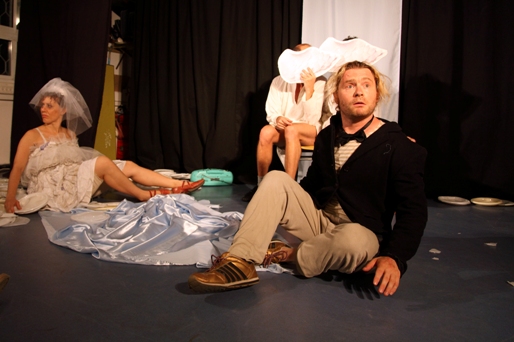
Ish Theatre opened their studio to show scenes from their new work ‘One and a Half.” Director Masha Nemirovsky warned the audience that crowded the benches and floor that they were about to see an open rehearsal, not a finished show, and the atmosphere was friendly and informal. After zipping through human history from the first Neanderthal through classical Greece, the dawn of Christianity, the Renaissance and World Wars, they stage a wedding that is abruptly halted by a catastrophic explosion. Just as the world ended with a bang, actor Noam Rubinstein peeked out of the curtain to ask Nemirovsky, “Should we continue?” When both Nemirovsky and the audience made it clear that the answer was yes, he said, “Then I need another explosion.”
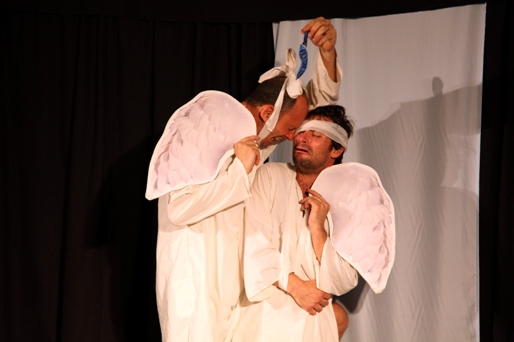
The door to Keren Gueller’s studio was ajar, allowing the visitors to take a voyeuristic peek into a room decorated for a party: streamers, bubbles, a table set with drinks, plastic chairs covered with confetti and music. The aroma of coffee drew one into the studio of body and performance artist Anisa Ashkar, where the splashes of coffee on the wall combine with photographs and text.
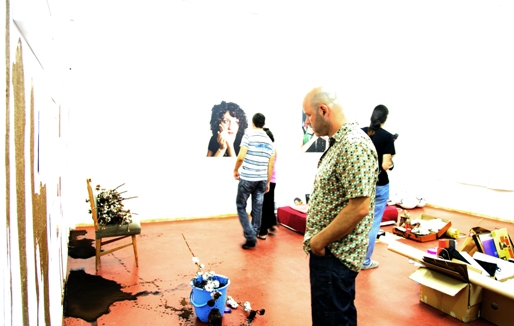
On the wall outside his studio, Rotem of Qiryat Gat displayed drawings created in workshops he has been conducting with local children. The black and white drawings are full of life and relate to images of different art works shown to the group, who created their own representations. On a wall nearby are tiny delicate drawings, reminiscent of etchings: a cow’s tooth, a hand grasping a pen and drawing another hand. Inside the studio is an intriguing world where it feels as though every available space is covered with drawings, texts and a seemingly endless collection of objects.
Like many an open house, there was a guest book at this event too: visitors were invited to join mailing list by writing with colorful markers on huge boards that stood in the hallway. On the wall opposite the guest book, inside an elaborate gold frame, a shifting video portrait of different people singing the Hebrew folk song Hava Nagila collected quite a crowd, who also enjoyed the cookies coming out of the kitchen.
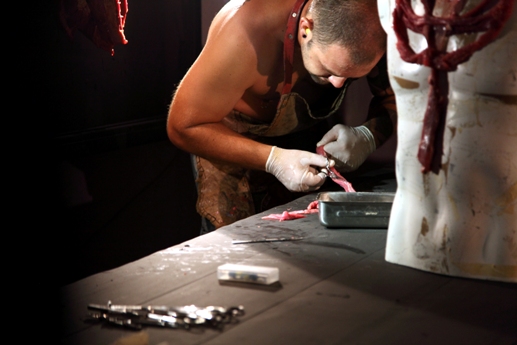
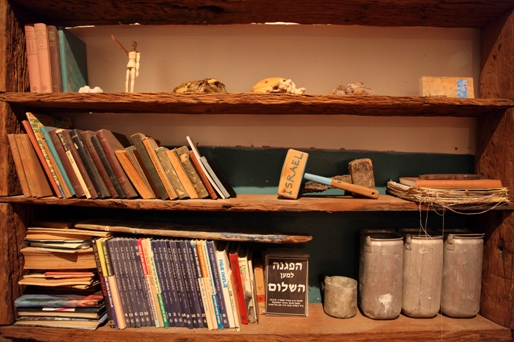
The Eifo Dana group performed group origami, creating a larger than life swan, and their installation Natua (2006) – a metal tree surrounded by open suitcases, ready perhaps to be dismantled and packed up to move yet again. Throughout the evening, FFF200 – group of visual artists and industrial designers, gave a live graffiti performance on the wall of the building. The complex is also home to a Thai boxing club, led by Yermi Knafo, who staged an exhibition fight with club member Menny – making this the first ever boxing match this writer has seen! Thai boxing is similar to other forms of kickboxing, with knees and legs taking a lead role – while I can’t imagine what a real fight would be like, the demonstration was beautiful.
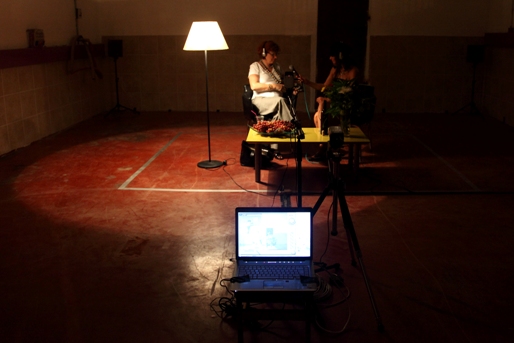
In the Urban Art Project Room, the first project ‘Guest Book’ was already underway. Two armchairs were set up in front of a video camera, with a sophisticated sound system. Yael Maftzir conducted short interviews with visitors. Hadas Ophrat, project initiator and artistic director, explained that their conversation is intimate, the sound system is arranged so that people who come into the room cannot hear the conversations in real time, allowing it be a conversation rather than a performance. The sound track, created by Tom Soloveitzik, consists of sounds recorded in Bat Yam, and during the evening, the sound man, Amir Boltzman added layers of the recorded interviews to the sound track. [any inaccuracies in this description are due to the complete technical ineptitude of the writer – but I’m sure the main idea comes across].
The participants are asked two questions: What do you expect from the city? What would you like to do for the city? Says Ophrat, “A city is something alive, it’s not dead. You can’t just use a city. We’d like to raise awareness, consciousness.” This is the initial stage of a long term project in which 8 artists will be invited to create ‘tours’ through the city and a model of the city will be created in the project room with a sound track from these conversations. Ophrat says it will be “a contemporary archeological site.
Art Factory is an initiative of the Bat Yam City Council, and supported by the Association for Culture, Leisure and Sport. Mali Baruch is the artistic director of the project and the launch event, which was produced by Alina Feldman.
All images courtesy of Leah Angel: www.leahangelphotography.com
AYELET DEKEL

